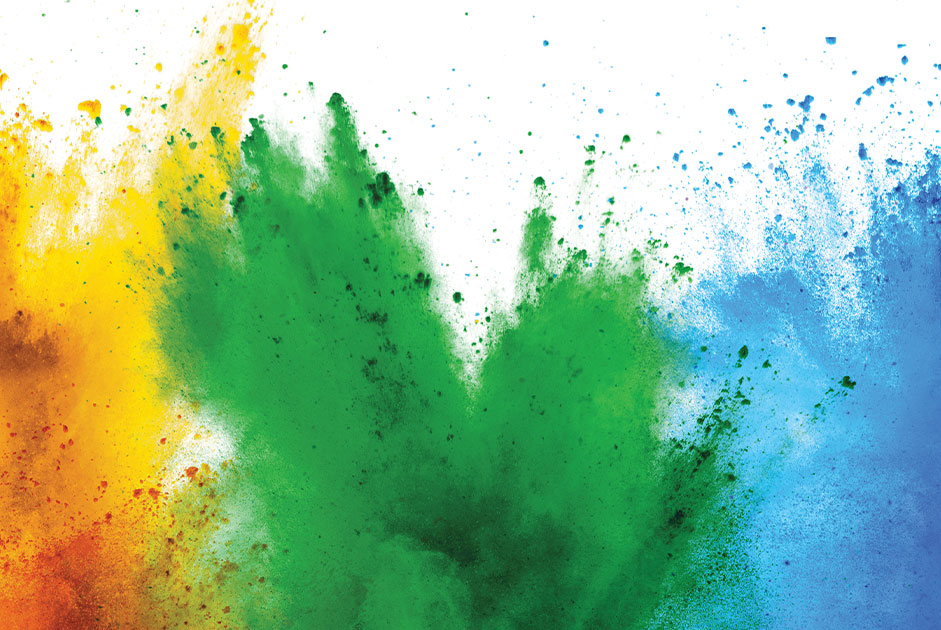Color is a beautiful thing. Who doesn’t have a favorite color? Color has significant influence on a person’s psychological and emotional state of mind and can affect mood, feelings, and emotions. Color can affect blood pressure, metabolism, heart rate, respiration rate, and even appetite. How color affects an individual is influenced by personal psychological experiences and cultural influences.
In understanding how color affects people, first, let’s define color in its basic state. When pure white light passes through a prism, it is split into an array of all visible colors. Each color is a separate wavelength and cannot be separated further. We all learned in school that colors are divided into three groups. Primary colors, red, blue, and yellow, are not mixtures of colors but are original colors in nature. Secondary colors, green, orange, and purple, are derived by mixing the primary colors. Tertiary colors are the result of mixing one primary color with a secondary color. Colors are also grouped into warm or cool categories. Warm colors are reds, pinks, oranges, and yellows and reflect a feeling of closeness and coziness. Cool colors are blues, purples, and greens and create an expression of spaciousness.
We use color in our lives to express our preferences and reflect our feelings. Color is a huge part of our home environments, and the selection of paint colors and furnishings is a highly sought-after talent delivered by home decorating professionals. Colors we choose for our personal wardrobes can express our personalities and attitudes on life. Let’s take a look at colors, their emotional effects on people and the personality traits of people who prefer them.
Red – Red elicits the strongest emotional response of any color. It reflects passion, energy, happiness, power, and ambition, as well as danger. People who love red live life boldly and tend to be ambitious, determined, and even competitive. Lovers of red’s close relation, pink, tend to be playful and romantic.
Blue – Blue is a safe color reflecting trust, responsibility, control, intelligence, and even authority. Blue is a favorite color of those who favor organization, harmony, and cleanliness. Blue lovers look for stability in life and are sensitive to those around them.
Green – Nature’s lovely green brings to mind rejuvenation, growth, generosity, and hope. People who prefer to be surrounded by green are loving, affectionate, and loyal. They are fully aware of their surroundings, including their reputation, and value personal integrity.
Yellow – Yellow is a happy color, bringing to mind spontaneity, fun, and joy. Yellow lovers are open, joyous, and eager to learn and share. Others generally find them to be reminiscent of sunshine itself.
Purple – This secondary color, a mixture of red and blue, screams creativity. Purple fanciers are often whimsical, fanciful, creative, and unique. They are often very compassionate and devoted but can tend to be arrogant as well.
Brown – This earthy color says, “down to earth,” reliable, a dependable friend. A simple life without lots of bells and whistles is preferable.
Black – Black is not actually a true color, but a mixture of all colors. Black represents mystery, elegance, and sophistication. It can represent mourning as well power, such as being “in the black” when flush with money. Black lovers can be serious, private individuals. They are often sensitive and artistic.
White – White is the absence of color. It represents cleanliness, purity, innocence, and wisdom. People who prefer white enjoy order and minimalism, are organized and prefer a logical approach to life.
As well as individual colors having influence on mood and emotion, the brightness and hue of colors are also influential. Vibrant, neon versions of colors are energizing, such as royal blue, magenta, and neon green. Dark, muted hues can create a sense of sadness or calmness, in the case of muted blues and greens. Pastels and neutrals such as grey and beige can create calming environments.
With information on how colors affect us emotionally and influences our moods and choices, it is interesting to assess our environments to see which colors surround us.





















